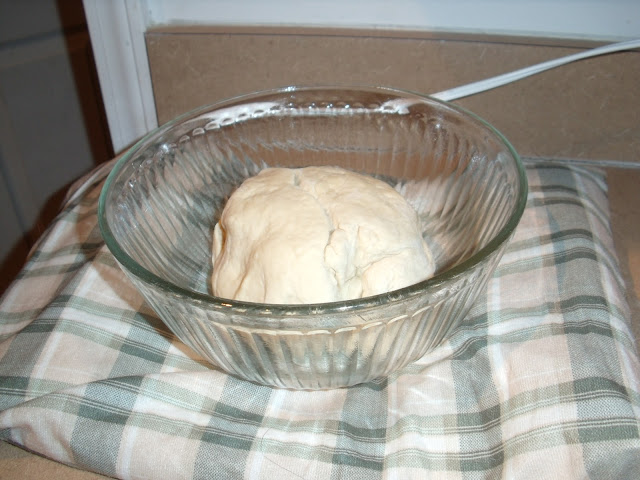"The time has come," the Walrus said. We have moved to a differnt site and has taken everything with us.
Go check us out at www.thenetworkfork.wordpress.com or www.thenetworkfork.com
Thanks for all of your support. I love you all
Tuesday, January 8, 2013
Wednesday, January 2, 2013
The Big Hole in My Life
As a transplanted New Yorker to the great state of
Tennessee, most of the changes that have accompanied our move have been
positive, but there have been some things I really miss. Things like bagels.
Every Tennessean loves his barbecue (or so it seems), and
conversely, every New Yorker loves their bagels (or so it seems). This is a
stereotype that I fit right into gladly. Upon moving to Tennessee… (Read: rural
Tennessee. Read: most of my neighbors have four feet and white tails.) A good
bagel is not so easy to come by.
You might be wondering what my big complaint is since it is
so easy for most of you to step into a grocery store and get a bag of bagels.
In fact, you can get everything from generic to Sara Lee to the store’s own bakery
version. Here are the problems I’ve encountered:
1. Generic
bagels taste gross. They are dense and undersized.
2. Sara
Lee is not always available at the stores I go to, but if it is, it’s
expensive. Or I’m cheap. Either way, the outcome is the same: I’m not always
willing to shell out the cash to get them.
3. The
bakery version is usually pretty tasty, but they only come 4 to a bag. They
also begin to spoil very quickly.
It became obvious to me that I was going to need a
practical, inexpensive and easy solution to my bagel problem.
There may be a group of you running around in a panic,
throwing your hands in the air, and shouting, “Oh no! Carbs!!!! Not carbs!”
However, the bagel offers some very nutritious components especially if you are
making your own with healthy ingredients.
First of all, bagels are a high-energy food. They contain
protein which actually can slow down some of those carbs from getting sucked up
into your bloodstream. Bagels also are a great source of fiber. Add to that the
flavorful ingredients that you can include in your recipe such as herbs,
fruits, nuts and seeds, and the benefits go up and up.
The health concerns about the bagel come down to two key
ingredients: salt and sugar. A store-bought bagel can contain very high levels
of sodium which many people attempt to avoid. My recipe only calls for 1 and ½
teaspoons of salt. Spread out over eight bagels, that doesn’t sound too bad.
The other health culprit is sugar. Sugar can be counteracted
by healthy toppings particularly those that are high in protein such as seeds
or eating the bagel with peanut butter.
Again, this recipe only calls for 1 and ½ tablespoons of sugar.
Considering the amounts of sugar found in most granola bars and cereals, the
bagel seems like a reasonable alternative to me.
Outside the question of “is it really good for me”, the
major drawback to making your bagels is the difficulty level or so I thought. I
never would have even considered making my own bagels until I first made bread.
It was only after tackling the bread, that I found myself brave enough to even
begin researching bagels.
As I’ve confessed again and again on this site, my major
considerations when cooking are that the food I am about to prepare be healthy
(at least relatively so), cheap and easy so this recipe will be no different.
Besides the cheapness and easiness of preparation, my favorite part is that the
dough required rises quickly – in about an hour and ten minutes – so you don’t
have to plan this experiment a week in advance.
Also, it was fun! Playing with….ahem…..I mean forming the
dough to create the bagels was fun! It was definitely an activity that I’d
recommend for those with children. Even younger children such as preschoolers
would probably enjoy it.
This recipe did not come from my own brain, but I don’t know
who I should credit it to. I usually pull recipes from books or the internet,
throw them into a manila folder and attempt at some point. Then, I keep or toss
or tweak depending on the outcome. So from the manila folder comes a great
success!
BAGELS
Ingredients:
2 teaspoons of active dry yeast
1 ½ tablespoons of granulated sugar
1 ¼ to 1 ½ cups of warm water
3 ½ cups of bread or high gluten flour (you can also use
half bread flour and half whole wheat flour)
1 ½ teaspoons of salt
Directions:
1. In
a small bowl, combine ½ cup of warm water, the sugar and the yeast. Let sit
WITHOUT STIRRING for five minutes.
2. Mix
flour and salt in your mixer bowl. Create a well in the center.
3. After
five minutes, stir your yeast mixture dissolving the sugar and the yeast. Pour
this into the well of your flour mixture.
4. Add
an additional ½ cup of plain warm water to the well.
5. Turn
on your mixer and begin to mix the dough.
6. You
may need to add up to an additional ½ cup of warm water to get well-mixed dough.
Dough should form a solid ball with nothing sticking to the walls of the bowl,
but not be too sticky when you touch it.
7. Knead
by hand on a lightly floured countertop until smooth. Try to work in as much
flour as possible for a stiffer consistency (less elastic dough).
8. Coat
a large glass or Pyrex bowl with oil and turn the dough in the bowl to coat the
dough on all sides. Cover the bowl with a clean, damp dish towel. Let rise in a
warm place for 1 hour. (HINT: I place my bowl on a heating pad to ensure getting
a good rise.)
9. After
an hour, punch down the dough in the bowl and let it rest for 10 minutes.
Here comes the fun part! Go get the kids!
10. Divide the
dough into 8 equal pieces. Roll each piece into a ball.
11. Press a
finger through the center of the ball to form a ring. Stretch and flatten the
ring until it is slightly smaller than the size of a bagel. (Picture Sara Lee
not generic!) Place the appropriately sized ring onto a lightly oiled cookie
sheet.
12. When all the
bagels are formed, cover them with your damp towel and let them rest for
another 10 minutes. While you are waiting, preheat your oven to 425 degrees and
bring a large pot of water to a boil on your stove.
13. When the ten
minutes is up, reduce the heat on your boiling pot of water. Use a slotted spoon
or a skimmer to lower a bagel into the water. (Confession: I used my fingers
but I am very stupid and may not be counted on for advice that will not lead to
the occasional burnt finger.) Depending on the size of your pot, you may be
able to float one or two or three bagels at a time.
14. The bagel
needs to cook in the boiling water for at least one minute on each side. If you
prefer a chewier (more authentically New York style) bagel, increase the
cooking time to two minutes per side.
15. If you want
to apply a topping to your bagel, do it as soon as you remove them from the
water. Topping ideas: seeds such as sesame, poppy or caraway, fresh minced
garlic or onion, cinnamon and sugar, freshly grated cheese…..the list goes on.
Be creative and please share in our comments section, what yummy combination
you came up with!
16. Once all the
bagels have been boiled on each side and topped or not topped as is your
preference, place them back on the oiled cookie sheet and bake them for twenty
minutes.
17. Cool on wire
rack.
I’ve also used my bagel dough to
make fried dough which is an apparently little known delicacy reserved largely
to northern state fairs and my family. If you’d like to know more, please let
me know in the comment section.
Also, in a future post, I’ll
show you just how easy it is to make your own cream cheese!
Now that I’ve made myself
hungry, I’m gonna go make more bagels.
Happy eating!
Sarah
Subscribe to:
Posts (Atom)




